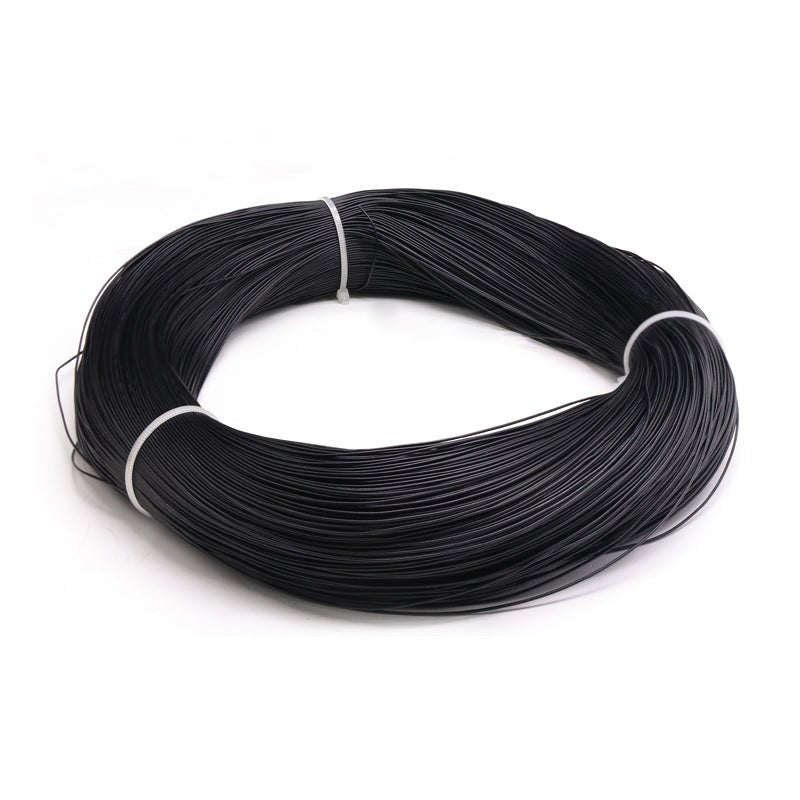1. Product core introduction
26 28 30 32AWG PVC Electronic Tinned Copper Stranded Flexible Cable is a high quality cable product crafted by HomeDIYer, which meets the UL1571 standard for electronic wires. It is made of high quality tinned copper stranded wire as the conductor, which has excellent electrical conductivity and can meet the signal and power transmission needs of many electronic devices.
2. The main characteristics of the product
Precise AWG specifications: 26, 28, 30 and 32AWG are available, allowing users to precisely select the appropriate gauge according to the current carrying and signal transmission requirements of specific electronic devices, ensuring that the cable meets the performance and optimises the use of resources, avoiding unnecessary waste and potential safety hazards.
High-quality tinned copper stranded wire: The conductor consists of multiple strands of tinned copper stranded wire, which not only enhances the flexibility of the cable and facilitates wiring operations, but also effectively improves the antioxidant and corrosion-resistant capability of the copper wire with the tinned layer to ensure stable long-term conductive properties, reduce signal degradation or power transmission failures due to aging or corrosion of the line, and prolong the service life of the cable.
Comply with UL1571 standard: Strictly follow the UL1571 electronic wire standard for production and manufacturing, which means that the cable has been rigorously tested and certified by authoritative organisations in terms of safety, electrical performance, etc., so that users can use it without worrying about product quality, which provides a reliable guarantee for home DIY electronic projects.
Soft and easy to operate: the use of special technology and material formulations, so that the cable has excellent flexibility, easy to bend, twist and moulding, can easily adapt to a variety of complex installation environment and wiring needs, greatly reducing the DIY process of the operating difficulties, even for non-professionals can also be easily managed to improve the installation efficiency and user experience.
3. Product use scene
Modification and maintenance of smart home equipment: In the modification or maintenance of smart home systems, such as smart lights, smart sockets, smart curtains and other equipment, the cable can be used to connect the controller with the main body of the equipment to achieve stable signal transmission and power supply, allowing users to customise the smart home functions according to their own needs, and enhancing the convenience and comfort of life.
Making small electronic appliances: For DIY enthusiasts to make small electronic appliances, such as homemade stereos, electronic clocks, small robots, etc., this cable can be an ideal choice for internal circuit connection to ensure accurate signal transmission between electronic components, helping DIY enthusiasts turn their ideas into reality and enjoying the fun of electronic production.
Computer and peripheral equipment upgrading and maintenance: Inside the computer mainframe, used to connect the hard drive, optical drive, graphics card and other expansion equipment, or in the maintenance of computer peripherals, such as printers, scanners, etc., its soft characteristics to facilitate the operation of wiring in a limited space, reliable conductivity can ensure the normal operation of the equipment, enhance the performance and stability of the computer system.
Automotive electronic equipment modification: in the car audio upgrades, car recorder installation, car lighting modification and other automotive electronic equipment modification projects, can adapt to the complex wiring environment inside the car, to meet the automotive electronic equipment on the cable flexibility and electrical performance requirements for automotive electronic modification to provide a safe and stable electrical connection solutions.
4. Product use instructions
Preparation before installation:
Check the appearance of the cable for any defects such as breakage, scratches, flaking insulation, etc. If there are any problems, contact for replacement in time.
Determine the required cable length and AWG specifications according to the actual use scenario and equipment requirements, and prepare the corresponding tools such as wire stripping tools, crimping pliers, soldering equipment (if necessary).
Wiring and connection:
In the wiring process, excessive bending and twisting of the cable should be avoided, try to keep the cable in a natural state of extension, for the parts that need to be bent, the bending radius should be not less than [X] times the outer diameter of the cable (specific multiples can refer to the product specification), in order to avoid damage to the internal stranding structure, affecting the conductive properties.
When connecting the cable with electronic equipment, use wire stripping tools to carefully peel off the insulation layer at the end of the cable, exposing the appropriate length of tinned copper stranded wire (generally 5 mm), and then according to the type of equipment connecting terminals, select the appropriate connection method, such as crimp terminals, soldering or plug-in connection, etc., to ensure that the connection is firm and good contact. After the connection is completed, insulating tape or heat-shrinkable tubing can be used to insulate the connection parts to prevent short-circuiting and leakage.
Precautions for use:
The rated voltage and current of this cable should be used in strict accordance with the parameters on the product specification, and should not exceed the maximum value stipulated therein, to avoid electrical safety accidents caused by overloading, damaging equipment or causing personal injury.
Avoid exposing the cable to harsh environmental conditions such as high temperature, open fire, humidity, corrosive chemicals, etc. If it is unavoidable, appropriate protective measures should be taken, such as the use of fireproof, waterproof and corrosion-resistant wire troughs or casings to protect the cable, in order to ensure the normal service life of the cable and the stability of its performance.
Regularly check the connection parts and overall appearance of the cable to see if there is loose, oxidation, damage, etc. If problems are found, they should be repaired or replaced in a timely manner to ensure that the cable is always in a good working condition and to protect the normal operation of electronic equipment.













